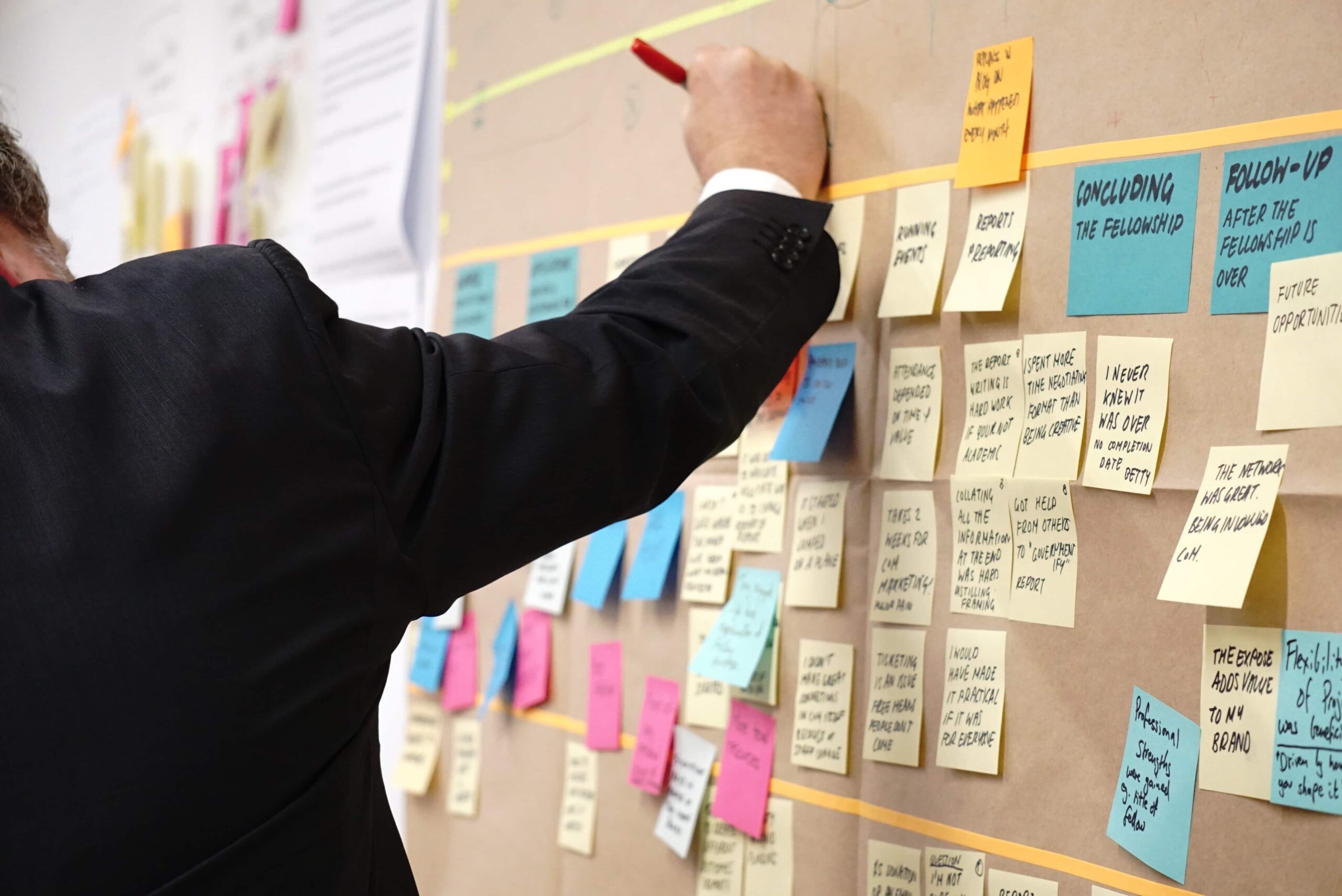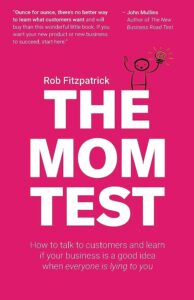Comparing The Methodologies: Kanban vs Scrum
When deciding between Kanban or Scrum, it’s essential to recognise that they can complement each other rather than being mutually exclusive. Both Kanban and Scrum can be effectively integrated to enhance project management.
In fact, many Scrum teams find value in utilising Kanban as a visual process and project management tool alongside their Scrum framework. While some teams may lean towards an exclusive Scrum approach due to its more prescriptive nature and reduced ambiguity, numerous Scrum teams have embraced specific Kanban principles to augment project visibility and achieve better results.
What Are The Differences Between Kanban and Scrum?
Scrum and Kanban are two methodologies that share common traits, such as enabling project adaptability, fostering team engagement, utilising short development cycles, and promoting transparency. However, they also exhibit distinct characteristics. Let’s delve deeper into the comparison to explore both the similarities and differences between these software solutions, Kanban and Scrum.
Kanban vs Scrum Roles

In Scrum, the Agile framework involves three essential roles: the Product Owner, the Scrum Master, and the Development Team. The Product Owner holds responsibility for managing the product backlog and providing direction to the team. The Scrum Master is tasked with defining timelines and ensuring adherence to the agreed-upon work during Sprint planning, while the Development Team processes the work within those timelines.
On the other hand, Kanban allows for a more flexible approach, enabling you to retain your existing structure without imposing significant changes. However, there are two optional Kanban roles that can be implemented:
- The Service Delivery Manager, whose role is to monitor the board and facilitate smooth progression of work items through the process. They also assist team members when challenges arise and actively promote continuous improvement within the team.
- The Service Request Manager, typically serving as a secondary role to the team manager. This stakeholder focuses on managing process policies and ensuring consistency, enhancing corporate governance, and mitigating risks associated with relying on a single individual’s decisions.
Kanban vs Scrum Planning
In Scrum, planning occurs iteratively at the beginning of each Sprint through a dedicated meeting involving the Development Team, Product Owner, and Scrum Master. During this session, user stories are broken down into tasks, and the team estimates the time required to complete the sprint’s items. Once a consensus is reached, the team commits to finishing all items within the upcoming Sprint and begins the work. However, if there’s a change in priorities mid-Sprint, the current Sprint must be aborted, and the planning process is restarted.
On the other hand, Kanban relies on a probabilistic approach to planning, which involves making predictions based on past workflow data. This method considers factors such as work types, size, classes of service, and other relevant aspects related to the work itself, rather than being heavily reliant on the specific team processing it. In Kanban, the workflow is continuous, and it is common practice to extend the Requested section of a Kanban board by adding roadmap columns like “This Month” and “Next Month” to visualise planned work.
By establishing a pull system, Kanban allows team members to start working on new assignments based on priority when there is available capacity. Knowing the average time required to finish tasks of different types and sizes, along with the team’s weekly throughput of work items, enables effective planning of start and end dates for each task. This data-driven approach helps achieve a more streamlined and efficient workflow.
You can learn more about using WIP Limits to effectively schedule a team’s time here.
Kanban vs Scrum Commitment

Kanban emphasises the principle of deferring commitment to maximise agility and achieve frequent, timely delivery of value. By setting Work in Progress (WIP) limits, team members focus on completing their current tasks before taking on new ones, ensuring a steady flow of work. This approach enables the team to remain adaptable and responsive to changing priorities.
In contrast, Scrum relies on Sprint forecasting for commitment. If the team’s capacity is not accurately anticipated or unexpected issues arise during the Sprint, it can lead to challenges. In such situations, either the Sprint may not be successfully completed, or team members may need to resort to exceptional efforts (“personal heroics”) to meet the Sprint’s goals within the designated timeframe.
Kanban vs Scrum KPIs
When considering the comparison of Kanban vs. Scrum, it is crucial to take into account the key performance indicators (KPIs) that will become integral to your work life based on your choice.
Scrum KPIs:
- Velocity: In Scrum, velocity is a specific KPI based on actual story points completed, usually calculated as an average of previous sprints. It helps the team plan how many product backlog items to bring into the next sprint.
- Planned Capacity: Capacity refers to the team’s availability for the sprint and can fluctuate due to factors like vacations or illnesses. The team considers capacity to determine the number of product backlog items to plan for a sprint. If capacity is expected to be less, the team should take on fewer items, and vice versa if additional team members are available.
Scrum teams often use the following charts to monitor and manage these KPIs:
- Burndown Chart: A visual representation of remaining work versus the time left in the Sprint, helping track progress and identify potential issues.
- Velocity Chart: Usually presented as histograms, displaying the historical performance of the Scrum team over time.
Kanban KPIs:
- Lead Time: The time from a new task’s appearance in the workflow until its final completion or departure from the system. Lead time starts when commitment to work on a task or customer order is made.
- Cycle Time: The time from a new arrival entering the “in progress” stage when someone actively works on it.
The objective in Kanban is to reduce these metrics (usually measured in days) over time to maintain an efficient process consistently. To monitor these KPIs, two primary charts are often utilised:
- Cumulative Flow Diagram (CFD): Shows the stability of the flow and helps identify areas for process improvement to enhance predictability.
- Cycle Time Histogram: Enables monitoring of process performance trends over time, aiding in identifying bottlenecks and efficiency improvements.
Check out our complete guide to KPIs here to learn more about how you can measure the health and growth of your business.
Kanban vs Scrum Meetings

As previously mentioned, Kanban allows for optional meetings, providing the flexibility to choose from two types of meetings or cadences: team-level cadences and service-oriented cadences. These meetings help maintain team alignment and ensure a steady workflow. The meeting options in Kanban include:
- Daily Meeting
- Replenishment & Commitment Meeting
- Delivery Planning Meeting
- Service Delivery Review
- Operations Review
- Risk Review
- Strategy Review
Teams can combine these meetings or skip those that they deem unnecessary based on their specific needs and preferences. For example, some teams may choose to hold the Service Delivery Review and Replenishment & Commitment Meeting together every week. This adaptability allows teams to tailor their approach according to what works best for them.
On the other hand, Scrum follows a set cycle consisting of four mandatory types of meetings:
- Sprint Planning: Conducted at the start of each Sprint, typically lasting up to 8 hours in a one-month cycle. During this meeting, tasks are delegated, and commitments are made for the upcoming Sprint.
- Daily Scrum: Held daily, the team meets to discuss progress and address any arising issues.
- Sprint Review: Taking place at the end of each Sprint, this meeting involves the team and relevant stakeholders to review what was accomplished during the iteration.
- Sprint Retrospective: Dedicated to analysing the previous Sprint’s successes and areas for improvement, this meeting helps in enhancing future iterations.
By following this structured approach, Scrum ensures a well-defined process for iterative development and continuous improvement.
Kanban vs Scrum Board
Both Kanban and Scrum employ visual management boards, but they exhibit fundamental differences in their approach.
In Scrum, the board serves as an extension of the product backlog. Once the team commits to a specific amount of work, it is added to the Scrum backlog on the board. During the Sprint, the team places work in progress on the board as they see fit. The objective is to complete all tasks by the end of the iteration, and the board is reset at the start of each new Sprint.
On the other hand, the Kanban board represents a continuous and dynamic visualisation of the team’s process. Building a Kanban board aims to establish a sustainable system that endures over time. A well-structured Kanban board includes visualised Work in Progress (WIP) limits. These limits are set to control the amount of work that enters and leaves the process, allowing for better control and improved delivery speed. The Kanban board remains unchanged throughout the process, and the focus is on optimising flow and efficiency continuously.
Is Kanban Scrum?
Kanban and Scrum are distinct work methods, each with its own set of characteristics. Scrum originated as an agile framework, conceived by Hirotaka Takeuchi and Ikujiro Nonaka in the New New Product Development Game back in 1986. It aimed to facilitate organisational knowledge creation. Since then, Scrum has evolved and continues to be studied, providing valuable insights and serving as a practical tool for business teams.
Conversely, the Kanban method is widely used by knowledge workers to enhance various aspects such as productivity, efficiency, cycle time, and quality. Kanban can complement Scrum or any other Agile approach effectively, as it allows visualisation and optimisation of work flow, regardless of the methodology being used.
Scrum follows an iterative, incremental approach with well-defined processes, roles, ceremonies, and artefacts. Work is organised into time-boxed periods known as Sprints, during which a specific body of work must be completed before the next Sprint begins. The duration of Sprints can vary, commonly ranging from two weeks to 30 days. Scrum status updates and prioritisation meetings are led by Scrum Masters, who ensure that the team adheres to Scrum standards.
On the other hand, Kanban offers flexibility and customization to align with existing team or company processes. Once an Agile-based work method is adopted or developed, teams can incorporate Agile tools like Kanban boards and project forecasting tools to effectively manage projects, workflows, and processes based on their specific needs and preferences.
When Should I Use Kanban vs Scrum?
Kanban and Scrum possess unique strengths, and it’s important to recognise that comparing them directly as an either-or choice is a false dilemma. In fact, you have the flexibility to leverage both methodologies simultaneously in your work, allowing you to harness the distinct advantages of each to maximise the overall benefits for your team and projects.
Use Kanban When
Kanban has demonstrated its effectiveness in enhancing visibility, promoting a culture of continuous improvement, and boosting productivity. One of the key advantages of Kanban is its ability to seamlessly integrate with existing processes, including Scrum. So if you are looking to capitalise on the benefits of an Agile approach without completely overhauling your current work process, Kanban provides an excellent starting point.
Use Scrum When
Scrum has been associated with numerous benefits, including increased productivity, accelerated delivery, cost reduction, and improved quality. Project managers often find Scrum to be an effective approach for handling complex projects or those prone to frequent changes. It proves particularly relevant in industries that experience frequent technological updates or for projects involved in creating innovative products. Scrum’s adaptability and ability to accommodate feedback make it a sensible choice in such dynamic environments.
Use Scrumban When
Scrumban is a hybrid approach that seamlessly blends the elements of both Kanban and Scrum methodologies. By incorporating Scrum’s processes and leveraging Kanban’s visualisation tools, Scrumban offers a powerful combination. It serves as an ideal choice for teams already familiar with either Scrum or Kanban, as it facilitates the integration of the other methodology into their existing processes. This adaptability makes Scrumban a valuable and flexible solution for teams seeking to enhance their workflow and productivity.
Overview
Now that you understand the difference between the Kanban and Scrum methodologies, take a look at our 2023 Agile Statistics and explore the power of creating user stories for your projects.







